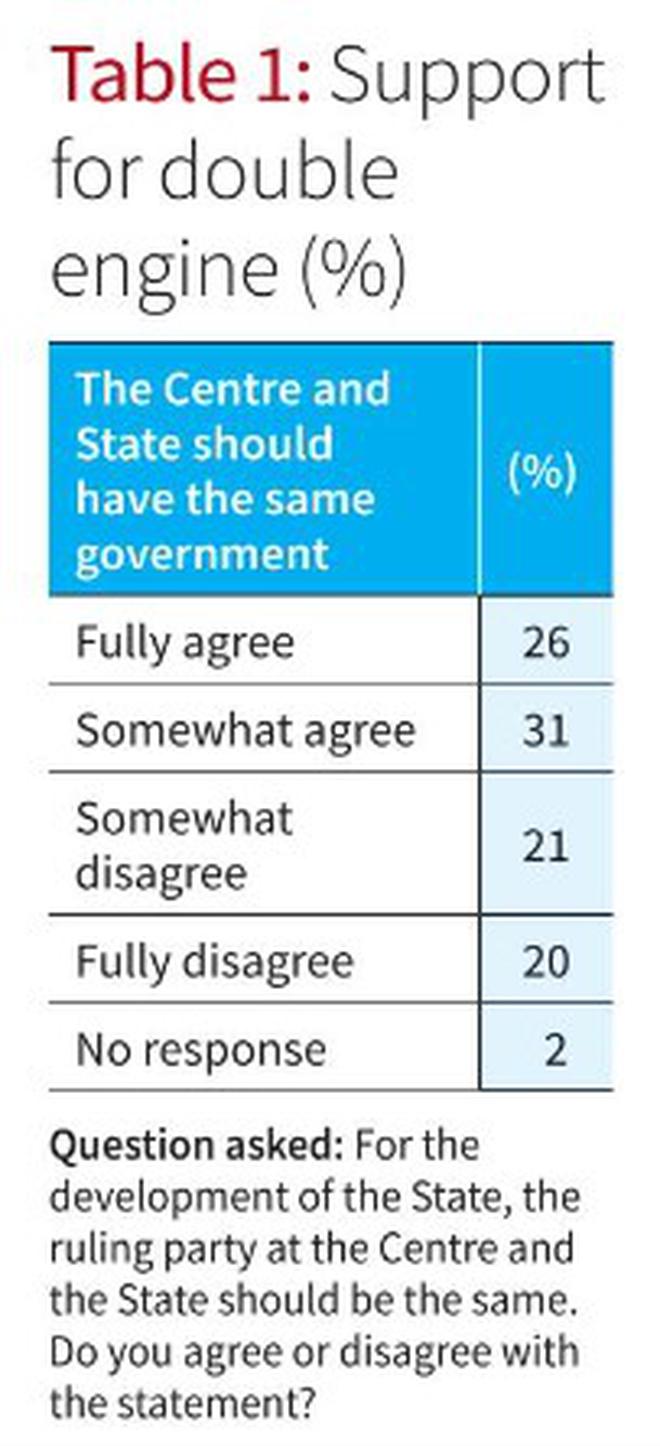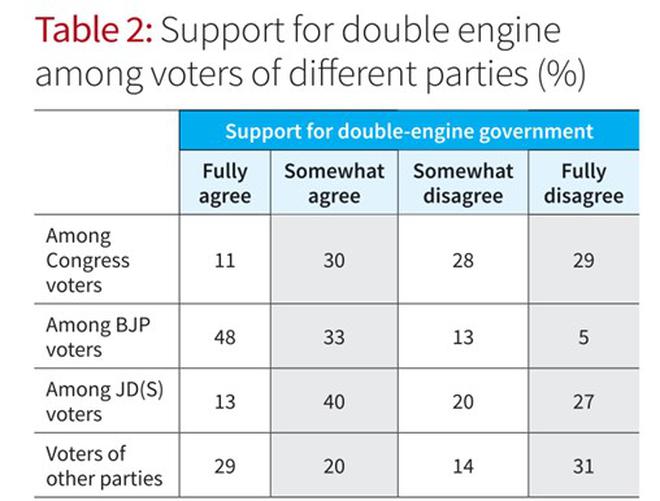The rhetoric of a “double-engine government” did not appear to convince the Karnataka voter this time. The double-engine model was introduced by the BJP to persuade voters to vote for the BJP at the State, promising increased benefits of development by having enhanced communication between the Centre and the State.
2023 Karnataka Assembly elections | Lokniti-CSDS postpoll study
Despite the larger appeal of this model as witnessed in high-octane campaigns, it did not have the desired impact on the voters in the State. As per the Lokniti-CSDS post-poll survey, its allure remained largely limited to the BJP supporters.

A little more than half of the voters expressed support for the double-engine model, but this support did not translate into votes for the BJP. Instead, two-fifths of the voters disagreed with the concept, with one-fifth fully opposing it (Table 1). The BJP voters were the primary advocates of the double- engine model, with nearly four-fifths of them supporting it. However, the model failed to generate sufficient enthusiasm among the non-BJP voters. Among those who disagreed, Congress and JD(S) voters made up the majority, with more than half of them expressing disapproval.

In particular, the opposition to the double-engine model was higher among the Congress voters (57%) than the JD(S) voters (47%) (Table 2).
Despite the popular appeal of the double-engine rhetoric, it did not translate into support for the BJP in Karnataka. This resulted in the only government that the BJP had in south India slipping away from their hands.
The authors are researchers at Lokniti-CSDS







